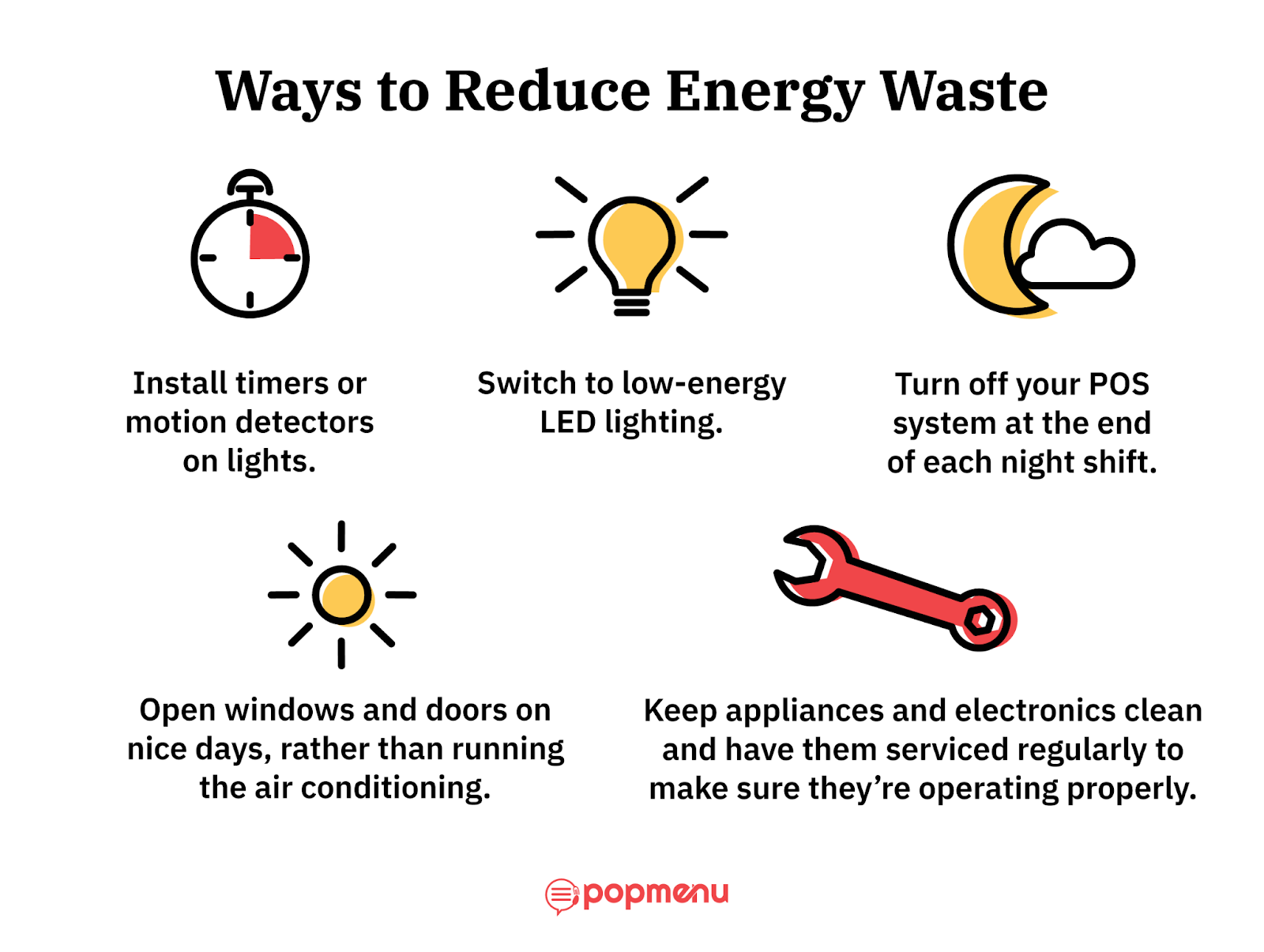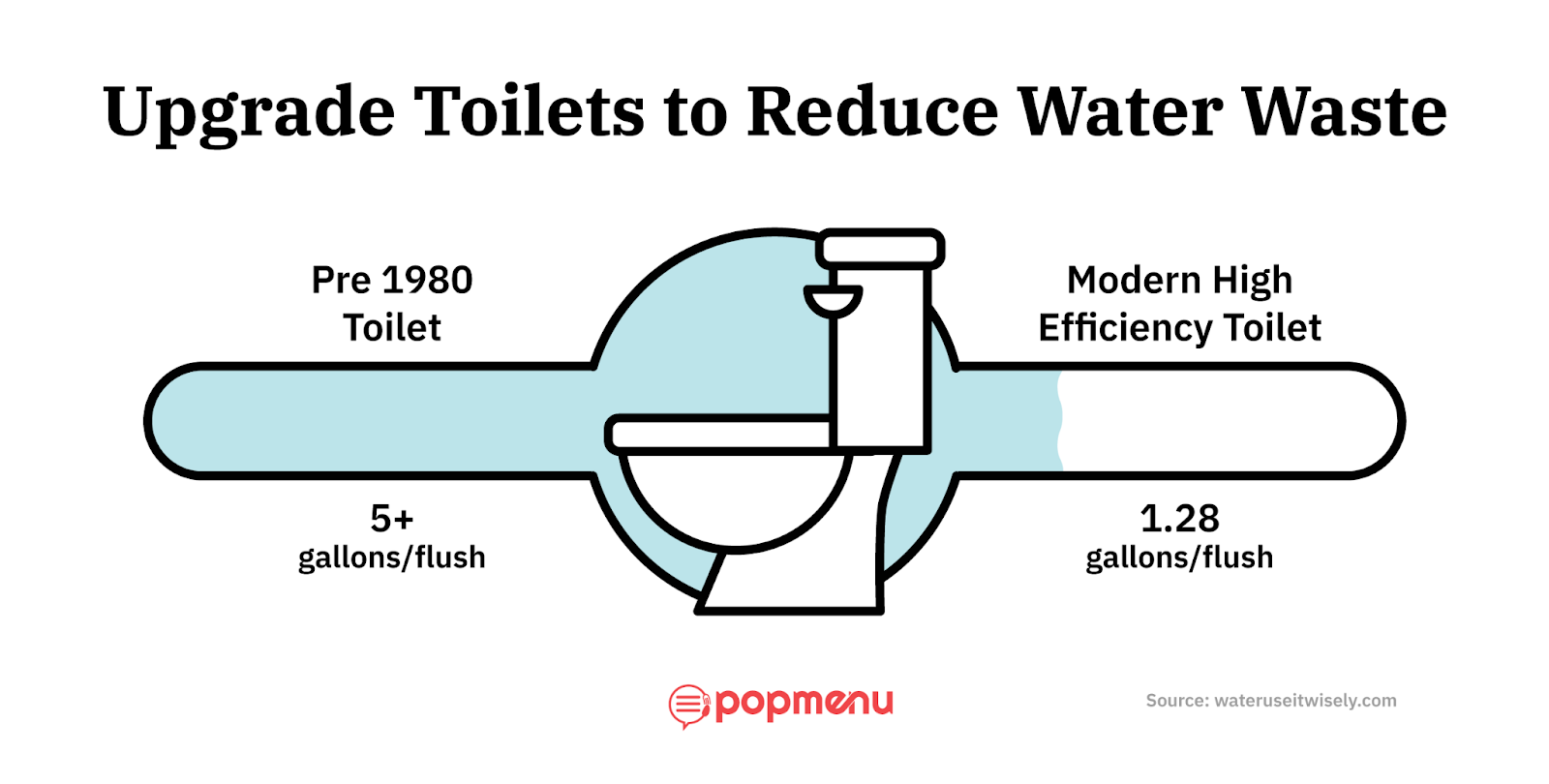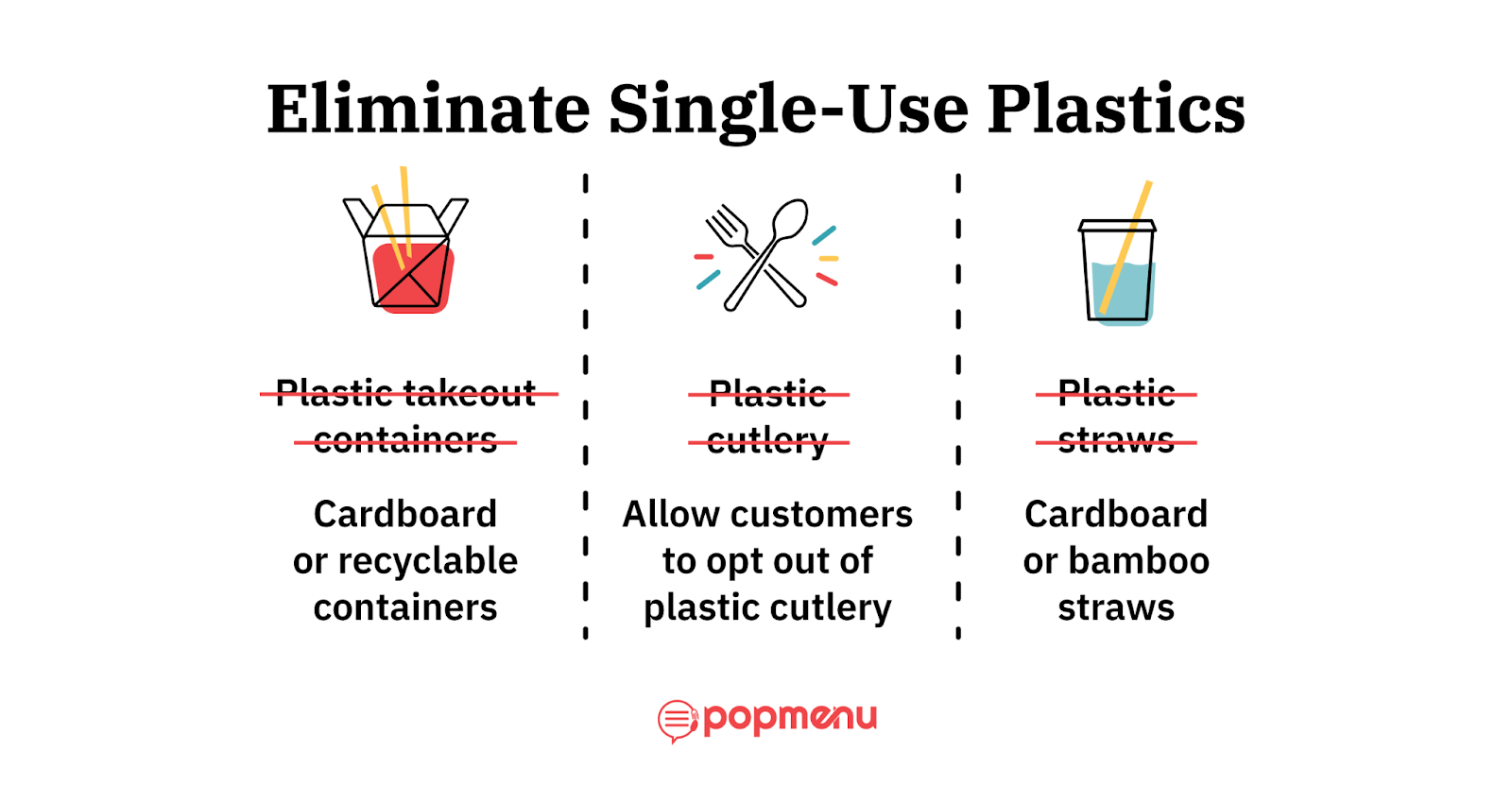
Sustainability in restaurants: 13 ways to make your restaurant more eco-friendly

Sustainability: It’s more than just a buzzword.
Like in so many other industries, sustainability in restaurants has emerged in recent years as a growing trend. But more and more, restaurateurs are seeing that benign eco-friendly is far from a fad—the sustainability practices that are becoming more common in the industry are here to stay.
For many restaurant owners, these changes can feel overwhelming and out-of-reach. Do you need to overhaul your entire menu? Reconfigure your whole supply chain? Replace all your lights and appliances?
Luckily, the answer is no. Creating more sustainability in restaurants doesn’t always require sweeping changes—even small steps can have a big impact.
Read on to learn all about why sustainability in restaurants is so important—and 13 steps your restaurant can take to become more sustainable.
What Makes a Restaurant Sustainable?
Sustainability in restaurants is pretty much what it sounds like: Restaurant owners taking steps to minimize the environmental impact of their business. This can mean reducing their carbon footprint and greenhouse gas emissions, turning to renewable energy sources, reducing waste, and other sustainable business practices.
While sustainability in restaurants can have a number of positive effects on the business itself, it also ripples out into your community. When restaurants use more sustainable practices, it gives their guests the opportunity to live more sustainably as well.
Why Should Restaurants Move Toward Sustainability?
The importance of sustainability in restaurants is right there in the name: Sustainable. These are practices that will secure the future of the restaurant industry, our communities, and even the Earth itself.
But there are even more reasons than just that. More and more guests want sustainable options when dining out—in fact, a 2018 study found that 83 percent of consumers wish they could patronize restaurants with more environmentally friendly practices.
Sustainable practices can help restaurants attract new customers, but also retain their existing customer base by building brand loyalty. And while many restaurant operators worry about the cost of sustainable practices, there are profit incentives, too—many sustainability initiatives cut down on waste and loss, which can help boost your restaurant’s bottom line.
13 Ways to Create a More Sustainable Restaurant
There’s even more good news for restaurateurs: There are many, many opportunities for sustainability in foodservice and restaurant operations. Here are 13 sustainable steps to get you started.
Reduce Energy Waste

One of the best ways for restaurants to become more sustainable is by reducing their unnecessary energy usage.
There are a lot of things in a restaurant that require energy: Lighting, appliances, POS systems and screens, and so much more. But with a few energy-saving practices, you can keep all those things from becoming “energy vampires”—that is, things that use energy when they don’t need to.
Some things to try:
- Install timers or motion detectors on lights.
- Switch to low-energy LED lighting.
- Open windows and doors on nice days, rather than running the air conditioning.
- Turn off your POS system at the end of each night shift.
- Keep appliances and electronics clean and have them serviced regularly to make sure they’re operating properly.
Reduce Physical Waste
Energy isn’t the only thing going to waste at restaurants. Restaurateurs also know that food waste is a huge concern for the industry, resulting in $25 billion in lost restaurant revenue yearly. Restaurants should strive to cut down on food waste—both because it will help them save money, and because less waste equals less food in landfills.
Consider investing in a smart inventory management system to help you better anticipate your restaurant’s food needs. And while restaurants will never be able to fully eliminate wasted food, they can be smarter about what they do with their leftovers. Consider donating them to a non-profit or another program in your community that provides meals for those in need, or join a local recycling program to ensure extra food and other waste gets reused appropriately.
Reduce Water Waste

And finally, there’s water—another resource that isn’t always used as efficiently as possible in restaurants. To reduce water waste, turn off sinks when they aren’t in use, ask guests if they’d like water instead of automatically giving a glass to everyone, and upgrade your appliances, like toilets and sinks, to low-flow versions.
Reduce Emissions
Many aspects of a restaurant’s business produce carbon emissions that harm the environment. Electricity, gas, and propane use all produce carbon emissions, so being efficient about use of these fuels can help reduce your restaurant’s carbon footprint.
Saving electricity, turning off gas stoves, and delivering food orders on foot or by bicycle can all help lower your restaurant’s overall emissions.
Green Your Supply Chain
One of the most important things to consider when making your restaurant more sustainable is the food production standards and sources for your suppliers.
You can make your own supply chain more sustainable by buying local ingredients, and buying them in bulk whenever possible. This reduces carbon emissions produced when ingredients and supplies travel long distances, or multiple deliveries are made to your restaurant within a short period of time.
You can also seek out providers who are implementing sustainable practices of their own. This is especially important when sourcing meats and animal products, as many factory-farmed animal products have a negative impact on the Earth.
The same goes for seafood—overfishing and fish farming have wreaked havoc on the oceans in recent decades, so if your restaurant plans to serve any kind of fish, be sure to seek out a sustainable seafood supplier.
Use Seasonal Products

Is there anything better than fresh produce at the height of its season? People who love good food don’t think so—and lucky for them, buying products when they’re in season is better for the environment. This is because in-season produce and other products don’t need to travel as far to get to your restaurant—as opposed to out-of-season ingredients, which are typically produced far away in different climates, and then shipped long distances.
Introduce More Meat-Free Menu Items
Meat consumption and production contribute to greenhouse gas emissions, including methane, CO2, and nitrous oxide. This contributes to warming temperatures around the globe—and even more so when we’re talking about meat consumption on a large scale, like factory farming.
One way to lessen your impact on the planet is to contribute less to the over-consumption of meat and animal products, and you can do so by offering more meat-free menu items for your guests to enjoy.
Many classic dishes are already meatless (think vegetable soups and stews, chili with beans instead of beef, macaroni and cheese, or pasta with alfredo sauce). Many others can easily be made meat-free with substitutions—consider mushrooms, lentils, chickpeas, and tofu in place of the meat in just about any dish.
Grow Your Own Produce

Many restaurants are turning to the place where they can get the freshest and most local produce: Their own property. A growing trend (no pun intended) in the industry is for restaurants to plant their own produce in on-site gardens. Even in cities where space is at a premium, restaurants are making this work, squeezing planters and garden beds into alleys and on rooftops.
Reuse Decor and Supplies
When decorating and furnishing a restaurant, not everything needs to be brand new. It’s more environmentally friendly—and more cost-effective—to search for used furniture and decor to reuse in your restaurant. Some communities even have restaurant-specific resale stores where you can pick up used items from other restaurants at discounted prices.
Not only does this cut down on the emissions created when new items are manufactured and shipped, but it keeps perfectly good items from being thrown away and ending up in landfills.
Replace Your Appliances
It may seem counter-intuitive to a restaurateur looking to cut costs, but upgrades to some of your restaurant’s large appliances can pay off over time. Refrigerators, dishwashers, ovens, and more have become remarkably more efficient in recent years, so if your restaurant is working with older appliances, it may be able to recoup the cost of newer, Energy Star certified appliances through reduced utility costs.
Use Green Cleaning Products
Cleaning products can be surprisingly harmful to the environment. Many common, brand-name cleaning supplies are made with chemicals that, when not disposed of properly, can pollute soil and water supplies.
Luckily, there are many companies looking to remedy this by offering lines of eco-friendly cleaning products. From their chemical ingredients to their packaging, these products are made with sustainability in mind—and often are competitively priced compared to harmful alternatives.
Eliminate Single-Use Plastics

From straws to cutlery to takeout containers, many restaurants rely heavily on single-use plastics, despite recent pushes to eliminate them in many cities.
While it’s pretty difficult to completely remove all single-use plastic products from a restaurant, there are some swaps you can make to replace plastics with recyclable materials, such as:
- Replacing plastic takeout containers with cardboard or recyclable foam.
- Allowing customers to opt out of receiving plastic cutlery and straws with their pickup and delivery orders.
- Using cardboard or bamboo straws instead of plastic ones.
- Investing in sustainable products and supplies that don’t come in wasteful plastic packaging.
Get Your Entire Staff Involved
As you implement new practices to promote sustainability in your restaurant, it’s important to have buy-in from everyone at the restaurant. This means getting your staff involved in all your new plans. Communicate clearly with them about the changes you’re making and the impact they’ll have. Try to get them excited about the positive effects of being more sustainable.
Your staff can also help spread the word about your sustainable practices, by talking with guests or sharing behind-the-scenes looks on social media.
Sustainability in Restaurants Starts with Small Steps
Implementing new sustainability efforts may not be easy. It’s important to remember that no restaurant becomes perfectly green overnight. Even a small step or two can have a big impact, especially over time. And once you’ve mastered your first few sustainable changes, you can take more steps, and bigger ones.
By starting with one or two small changes, you lay the groundwork for a more sustainable future both for your restaurant, and for the entire industry.





.jpeg)






